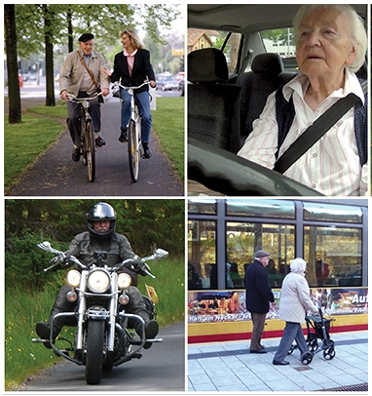Ageing and Mobility
Migration can be defined as a change in residence from one location to another. Such movements are immensely diverse, from short distance house changes to intercontinental moves. Many moves are short term, have little impact on the migrants' lives, and are reversible; others are permanent and life changing. As migration is a spatial process, it has been keenly studied by population geographers, whereas demographers are more interested in the dynamics of fertility and mortality. Migrations, however, also change the size, composition, and distribution of populations. Although most migrations are mundane, in aggregate and over time several types have radically transformed continental, national, and regional populations, prominent examples being the slave trade across the Atlantic Ocean, the colonization of Australia, and late twentieth century migration from the Caribbean, Turkey, the Middle East, and the Indian subcontinent to northwest Europe, and most widespread of all since 1950, rural–urban migration throughout the less developed world.

This article examines the connections between migration and old age, particularly in contemporary affluent societies. Most migrants are young adults, demonstrating the link between migration and the life course, or more precisely that migration most often occurs among people going through a transition from one life course stage to another. Both local and long distance moves are stimulated by many different transitions: becoming independent from one's parents, beginning a new career, marriage or a new partner, economic success or failure, retirement, and becoming chronically frail or sick. The first three of these 'life course transitions' explain why the likelihood of an individual migrating peaks in late adolescence and young adulthood. The last two explain a secondary peak around the ages at which people cease paid work, and why there is a rising propensity to migrate through the oldest ages, above 75 years. These relationships between age and migration have been demonstrated in North America, several European countries, and Australasia. The details vary and sometimes reflect social policy and economic conditions. If, for example, there is 'full employment', a low rate of divorce, and universal arrangements for retirement at a specified age, the 'retirement peak' is prominent.
Migration and Old Age
Internal Retirement Migration
International Retirement Migration
Aged Labor Migrants
Return and Family-Joining Older Migrants
Older Minority-Group Migrants in Rich Countries
Migrants in Advanced Old Age
Recent Developments in Retirement Migration
Mobility and Older People's Quality of Life